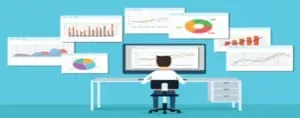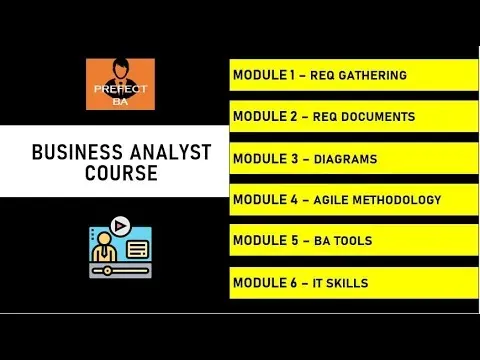
Ten Excel Features Every Analyst Should Know

This course will provide you with an introduction to ten essential Excel features that every analyst should know. You will learn how to use formulas, functions, and shortcuts to quickly and accurately analyze data. You will also learn how to create charts and graphs to visualize data, as well as how to use pivot tables to summarize and organize data. By the end of the course, you will be familiar with and capable of using a variety of useful Excel features that will allow you to save time and effort in your work.▼
Course Feature
![]() Cost:
Cost:
Free
![]() Provider:
Provider:
Udemy
![]() Certificate:
Certificate:
No Information
![]() Language:
Language:
English
![]() Start Date:
Start Date:
Course Overview
❗The content presented here is sourced directly from Udemy platform. For comprehensive course details, including enrollment information, simply click on the 'Go to class' link on our website.
Updated in [May 17th, 2023]
This course provides an overview of ten essential Excel features that every analyst should know. Participants will learn how to use functions, formulas, and shortcuts to save time and effort in their work. They will also learn how to create charts and graphs to visualize data, as well as how to use data validation and conditional formatting to ensure accuracy. By the end of the course, participants will be familiar with and capable of using a variety of useful Excel features.
[Applications]
After completing this course, participants should be able to apply the Excel features they have learned to their own work. They should be able to use the features to create more efficient and accurate spreadsheets, as well as to analyze data more effectively. Additionally, participants should be able to use the features to create more visually appealing and informative presentations. Finally, participants should be able to use the features to automate tasks and create macros to save time and effort.
[Career Paths]
1. Data Analyst: Data Analysts are responsible for collecting, organizing, and analyzing data to identify trends and patterns. They use their findings to inform decisions and strategies for businesses. With the knowledge gained from this course, Data Analysts will be able to use Excel to quickly and accurately analyze data, allowing them to make more informed decisions.
2. Financial Analyst: Financial Analysts use financial data to assess the performance of investments and make recommendations to clients. With the Excel skills learned in this course, Financial Analysts will be able to quickly and accurately analyze financial data, allowing them to make more informed decisions.
3. Business Intelligence Analyst: Business Intelligence Analysts use data to identify trends and patterns in order to inform business decisions. With the Excel skills learned in this course, Business Intelligence Analysts will be able to quickly and accurately analyze data, allowing them to make more informed decisions.
4. Data Scientist: Data Scientists use data to identify trends and patterns in order to inform business decisions. With the Excel skills learned in this course, Data Scientists will be able to quickly and accurately analyze data, allowing them to make more informed decisions. Additionally, they will be able to use Excel to create predictive models and machine learning algorithms. This will allow them to make more accurate predictions and better understand the data.
[Education Paths]
1. Bachelor of Science in Business Analytics: This degree program focuses on the application of data analysis and predictive modeling to solve business problems. It covers topics such as data mining, machine learning, and statistical analysis. This degree is becoming increasingly popular as businesses look to leverage data to gain a competitive edge.
2. Master of Science in Data Science: This degree program focuses on the development of data-driven solutions to complex problems. It covers topics such as data engineering, data visualization, and artificial intelligence. This degree is becoming increasingly popular as businesses look to leverage data to gain a competitive edge.
3. Master of Science in Business Intelligence: This degree program focuses on the application of data analysis and predictive modeling to solve business problems. It covers topics such as data mining, machine learning, and statistical analysis. This degree is becoming increasingly popular as businesses look to leverage data to gain a competitive edge.
4. Master of Science in Data Analytics: This degree program focuses on the development of data-driven solutions to complex problems. It covers topics such as data engineering, data visualization, and artificial intelligence. This degree is becoming increasingly popular as businesses look to leverage data to gain a competitive edge.
Pros & Cons
-

Learned useful tips.
-

Basics encountered here.
-

Taught something new.
-

Easily explained and demonstrated.
-

Most important tools for Data Science.
-

Captioning not matching speaker.
-

Grouping sheets not clear.
-

Not aware of features before.
-

Editing spreadsheets not easy.
-

Slow explanation.
Course Provider






